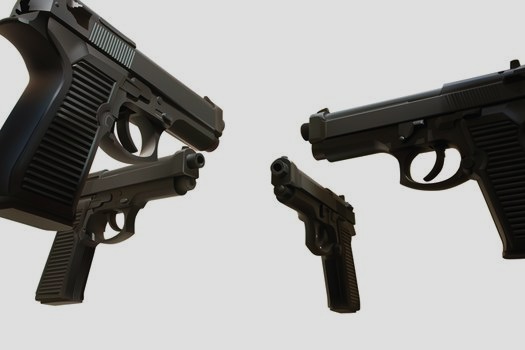

A recent bill sent from the Michigan House of Representatives to the Governor would make it easier to carry a concealed weapon in a school. After Friday’s shooting at Sandy Hook Elementary School, a spokesman for House Speaker Jase Bolger said the policy could have been “the difference between life and death for many innocent bystanders.”
Is he right? Will allowing guns in schools make those schools safer? It hasn’t helped much in homes or on the street, researchers say, and evidence suggests that access to guns could actually exacerbate violence.
A 2009 University of Pennsylvania study financed by the National Institutes of Health looked at the chances of being shot when holding a gun versus not holding a gun. In Pennsylvania, from 2003 to 2006, police sent the epidemiological researchers reports of gun-related assaults soon after they happened. A research firm then matched those victims with similar people in the area who did not own guns through phone surveys conducted by random-digit dialing. (This is the same sort of research setup that goes into studying the link between drunk driving and car crashes or smoking and lung cancer.) With both a gun-owning victim and a non-gun-owning Philadelphian, researchers had a variable and a control group. Then by comparing those who were shot and had a gun on them with the control group, the researchers looked for a correlation–and found one. In the study, someone in possession of a gun was about 4.5 times more likely to be shot. If the victim had a chance to resist, he or she was 5.5 times more likely to be shot.
Even more interesting is what the research didn’t find. “There was an expectation that we should surely find a protective value,” the study’s lead researcher Charles Branas, of the University of Pennsylvania, says. But having a gun, he says, “on average was found not to be protective in assaults.” This is the conclusion written in the study: “Although successful defensive gun uses can and do occur, the findings of this study do not support the perception that such successes are likely.”
Branas says there are a few possible reasons why they saw the increased risk among those with guns: For one, people might enter an environment they’d normally avoid. A conflict might also escalate when a gun was involved. Finally, and most unlikely, someone could have the gun taken from him or her and be shot with it.
Other studies support the notion that guns and personal safety do not go hand in hand, especially with guns in the home. The Harvard School of Public Health’s David Hemenway published a study in 2011 and concluded that the chances of violence occurring in the home were increased when a gun was around. “On the benefit side, there are fewer studies, and there is no credible evidence of a deterrent effect of firearms or that a gun in the home reduces the likelihood or severity of injury during an altercation or break-in,” Branas says.
These studies don’t zero in on school shootings, obviously. But it’s not hard to see how the same conclusion might apply: having guns around is unlikely to swing a shooting toward a better outcome.
